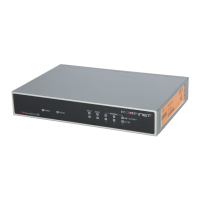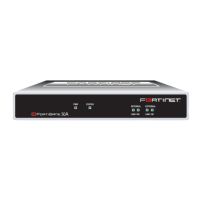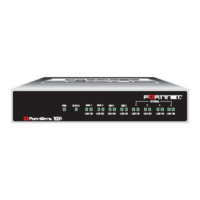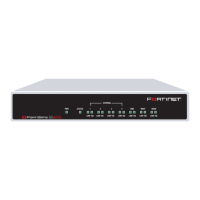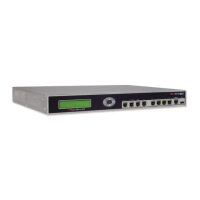Getting started Factory default FortiGate configuration settings
FortiGate-50 Installation and Configuration Guide 23
Factory Default DHCP configuration
When the FortiGate unit is first powered on, the external interface is configured to
receive its IP address by connecting to a DHCP server. If your ISP provides IP
addresses using DHCP, no other configuration is required for this interface.
The FortiGate unit can also function as a DHCP server for your internal network. You
can configure the TCP/IP settings of the computers on your internal network to obtain
an IP address automatically from the FortiGate unit DHCP server. For more
information about the FortiGate DHCP server, see “Providing DHCP services to your
internal network” on page 99.
Factory default NAT/Route mode network configuration
When the FortiGate unit is first powered on, it is running in NAT/Route mode and has
the basic network configuration listed in Tab le 3. This configuration allows you to
connect to the FortiGate unit web-based manager and establish the configuration
required to connect the FortiGate unit to your network. In Table 3 HTTPS
management access means you can connect to the web-based manager using this
interface. Ping management access means this interface responds to ping requests.
Table 2: FortiGate DHCP Server default configuration
Enable DHCP ;
Starting IP 192.168.1.1
Ending IP 192.168.1.254
Netmask 255.255.255.0
Lease Duration 604800 seconds
Default Route 192.168.1.99
Exclusion Range 192.168.1.99 - 192.168.1.99
Table 3: Factory default NAT/Route mode network configuration
Administrator
account
User name: admin
Password: (none)
Internal interface
IP: 192.168.1.99
Netmask: 255.255.255.0
Management Access: HTTPS, Ping
External interface
Addressing Mode: DHCP
Management Access: Ping
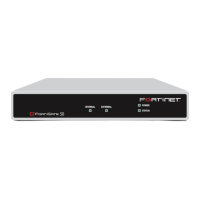
